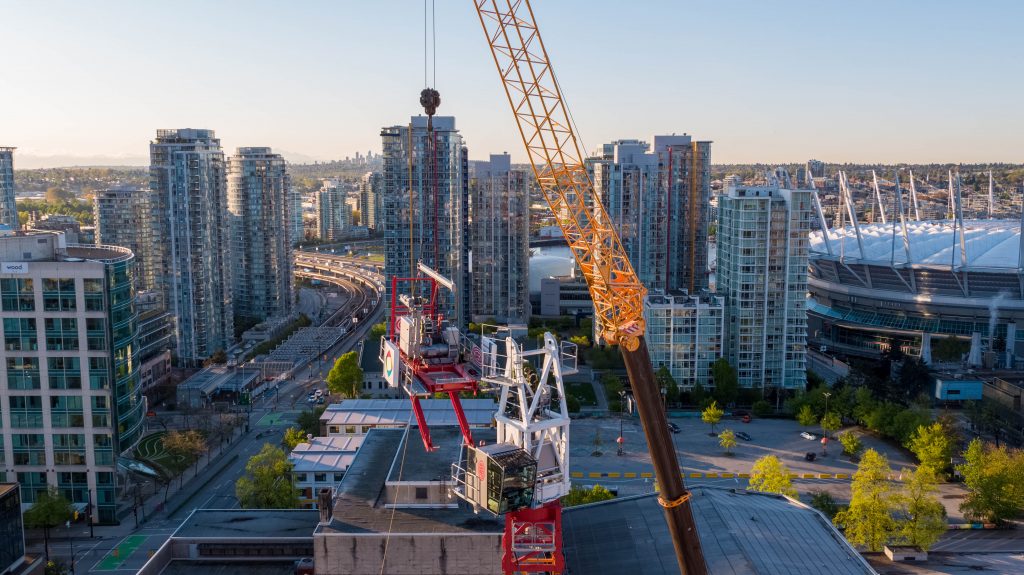
New safety rules for cranes, including use of zone-limiting devices, now in effect in B.C.
March 9, 2023
By
OHS Canada

A crane in downtown Vancouver. Photo: Allied Crane/Crane & Hoist Canada
New and revised regulatory requirements for crane misadventure, and the use of zone-limiting devices in tower cranes, are now in effect in British Columbia.
Amendments to the Occupational Health and Safety (OHS) Regulation took effect on March 1, 2023, according to WorkSafeBC.
The purpose of the amendments is to improve worker safety by requiring a professional engineer to supervise the inspection of equipment and certify the equipment as safe for use after both crane misadventures and contacts, as well as to ensure zone-limiting devices are installed in tower cranes, when practicable, to reduce the likelihood of collisions.
Defining ‘misadventure’
Under the regulations, “misadventure” includes contact — “other than a contact that is consistent with operation as specified by the manufacturer or professional engineer.”
The intent of this change is to resolve an inconsistency with provides for inspection requirements after loads and structures, and to have all contacts addressed in one section of the regulations.
The description for contact continues to include contact with a high-voltage electrical source, but now also includes contact with other cranes, equipment, buildings, or structures. See section 14.6.1.
Overlapping operating zones
Employers must ensure a tower crane is erected in “a way that avoids overlapping operating zones with other tower cranes and other equipment.” Section 14.84.1 also sets out the procedures required if an overlapping operating zone cannot be avoided.
A new subsection requires cranes to be equipped with and operated under the control of a zone-limiting device with anti-collision control, if practicable.
The amendments to this section also set out the procedures that must be followed in an overlapping operating zone between tower cranes.
These amendments are significant as they place the duty on the operator of the higher crane (previously the lower crane) to get permission from the operator of the lower crane. The amendments require that the operator of the higher crane must contact the operator of the lower crane before entering the overlapping operating zone.
Working close to exposed high-voltage equipment
A new subsection — 19.24.1 — has been added to require a zone-limiting device to be installed on a tower crane, where practicable, to prevent its movement into the minimum approach distance for working close to exposed high-voltage electrical equipment or conductors.
The intent of this subsection is for a zone-limiting device to provide another level of safety in situations where there could be movement into the minimum limit of approach distance.
See https://www.worksafebc.com/en/law-policy/occupational-health-safety/searchable-ohs-regulation/ohs-regulation/part-14-cranes-and-hoists for more information.